How to Plan Trip to Ladakh from Delhi in 2024?
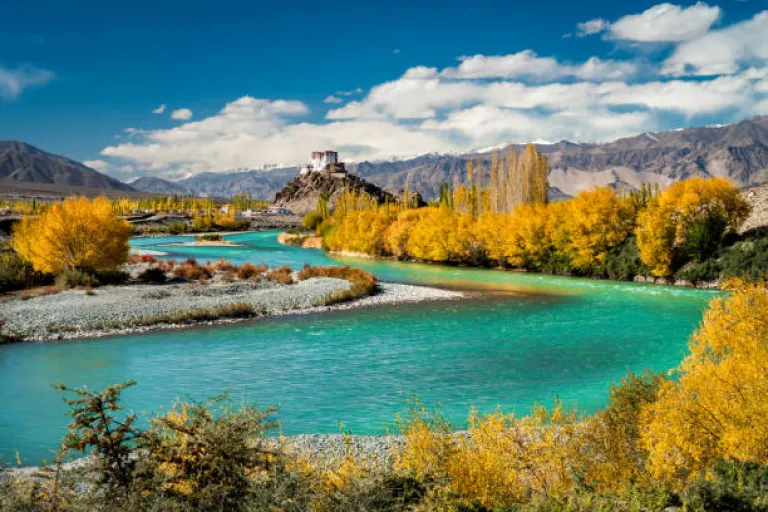
In 2024, Ladakh continues to reign as one of India’s most sought-after destinations, captivating adventurers, nature lovers, and spiritual seekers alike.
Nestled in the lap of the mighty Himalayas, Ladakh is often referred to as the "Land of High Passes," where snow-capped peaks, shimmering lakes, and ancient monasteries create a surreal landscape.
Planning a trip from Delhi to this high-altitude paradise is an experience in itself, requiring thoughtful preparation and a spirit of adventure.
How to Plan Ladakh Trip From Delhi?
1. Choosing the Perfect Time to Visit Ladakh: When the Mountains Beckon
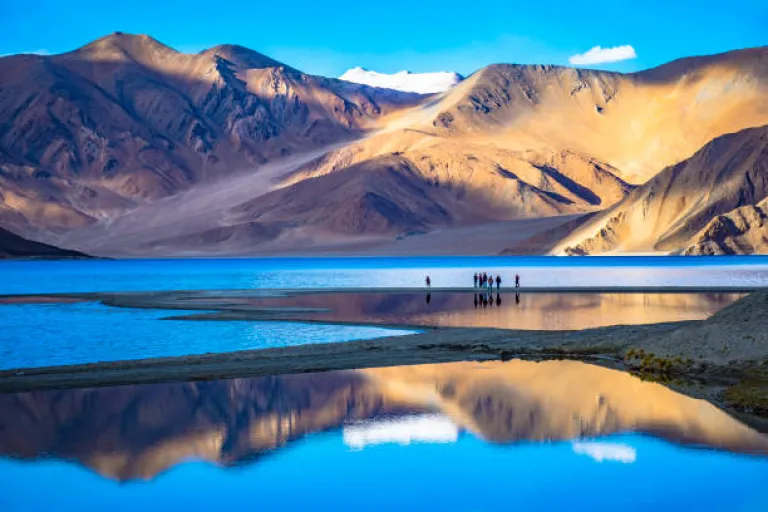 Timing is everything when it comes to Ladakh. The best months to visit are from May to September, when the mountain passes open up, revealing Ladakh’s pristine beauty.
Timing is everything when it comes to Ladakh. The best months to visit are from May to September, when the mountain passes open up, revealing Ladakh’s pristine beauty.
During these months, the snow has melted, the skies are clear, and the region comes alive with festivals, vibrant markets, and the gentle hum of travelers from around the world.
Visiting in early May offers a glimpse of the last remnants of winter, while a September visit treats you to the vibrant hues of autumn.
Each season in Ladakh has its own charm, but planning your visit during these months ensures that you experience Ladakh at its most accessible and inviting.
2. Deciding on Your Route: The Road Less Traveled or the Aerial Shortcut?
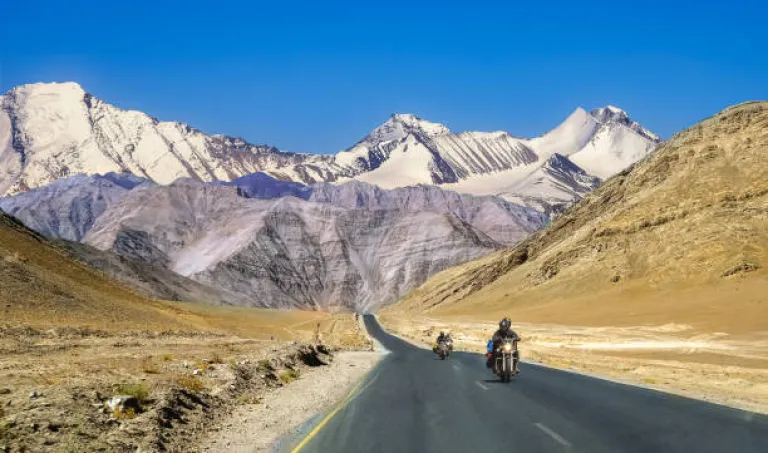 Getting to Ladakh is part of the adventure, and you have two main routes to consider:
Getting to Ladakh is part of the adventure, and you have two main routes to consider:
Delhi to Ladakh via Manali (Leh-Manali Highway):
Distance: Approximately 990 km
Duration: A thrilling 2-day road journey through some of the most dramatic landscapes in the world.
Highlights: Cross the iconic Rohtang Pass, witness the haunting beauty of Sarchu, and navigate the dizzying heights of Baralacha La.
This route is ideal for those who crave the rush of winding mountain roads and jaw-dropping vistas.
Delhi to Ladakh via Srinagar (Srinagar-Leh Highway):
Distance: Approximately 1,070 km
Duration: A scenic 2-day road journey, steeped in history and natural beauty.
Highlights: Drive past the historic town of Kargil, feel the spiritual aura of Lamayuru Monastery, and test your senses at the enigmatic Magnetic Hill.
This route is perfect for those who want to soak in the cultural and natural heritage of Kashmir before reaching Ladakh.
3. Modes of Transportation: Picking the Right Wheels for Your Journey
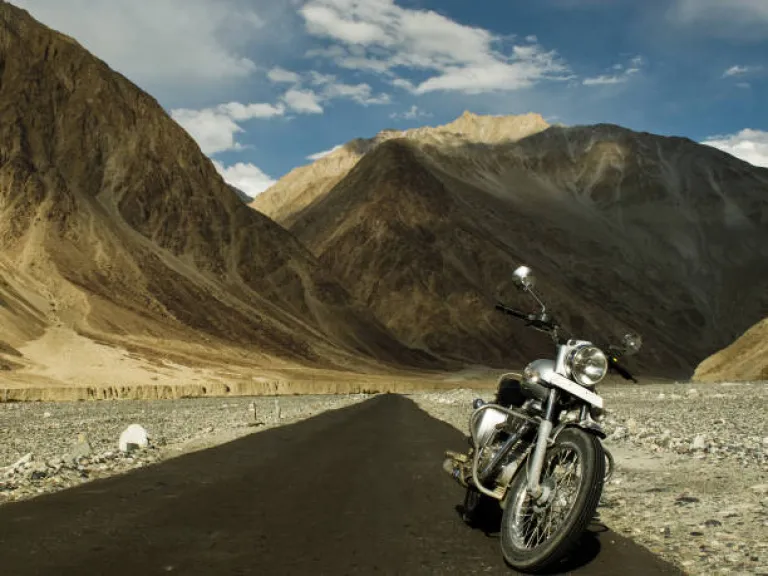 By Air:
By Air:
If time is of the essence, fly directly from Delhi to Leh’s Kushok Bakula Rimpochee Airport. In just 1.5 hours, you’ll be whisked from the plains of Delhi to the high-altitude haven of Leh.
But remember, the sudden change in altitude demands a period of rest and acclimatization upon arrival.
By Road:
The more adventurous (and time-rich) option is to hit the road:
Private Vehicle: Whether in your own car or a rented one, the drive to Ladakh is a bucket-list experience. Ensure your vehicle is well-equipped for the rugged terrain and unpredictable weather.
Bus: For a more laid-back approach, hop on a bus operated by Himachal Road Transport Corporation (HRTC) or Jammu and Kashmir State Road Transport Corporation (JKSRTC).
These buses take the Manali-Leh or Srinagar-Leh routes, offering a budget-friendly way to travel.
Motorbike: The ultimate road-trip dream is to ride a motorbike through the Himalayas. The Leh-Manali and Srinagar-Leh highways are the most popular routes, attracting bikers from around the globe. Ensure you’re well-prepared for the challenges of high-altitude biking.
4. Acclimatization: The Key to a Safe and Enjoyable Ladakh Experience
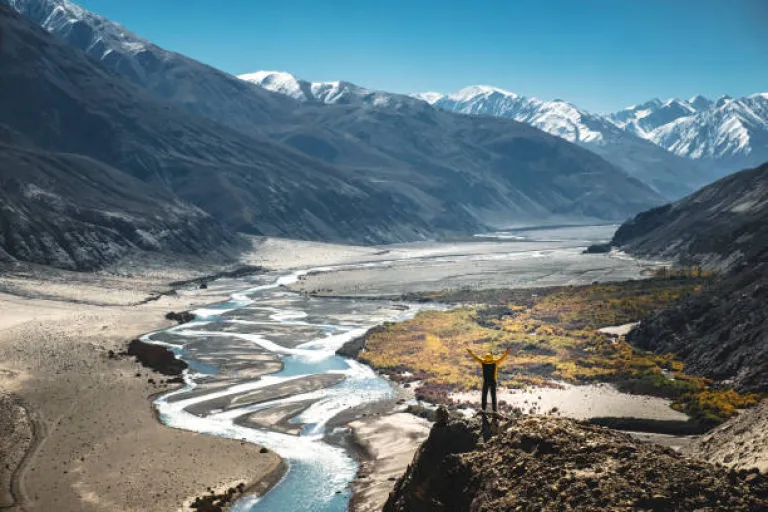 Ladakh’s high altitude can be unforgiving to those unprepared. Upon arriving in Leh, spend at least two days acclimatizing.
Ladakh’s high altitude can be unforgiving to those unprepared. Upon arriving in Leh, spend at least two days acclimatizing.
Take it easy, drink plenty of fluids, and let your body adjust to the thinner air. If you plan to venture to places like Nubra Valley or Pangong Lake, allow extra days to ensure you’re fully acclimatized before tackling higher altitudes.
Trust us, the slow and steady approach will pay off, keeping altitude sickness at bay and your trip on track.
Also read: Surviving Ladakh: A Family’s High-Altitude Struggle
5. Crafting the Perfect Itinerary: A Journey Through Ladakh’s Most Iconic Destinations
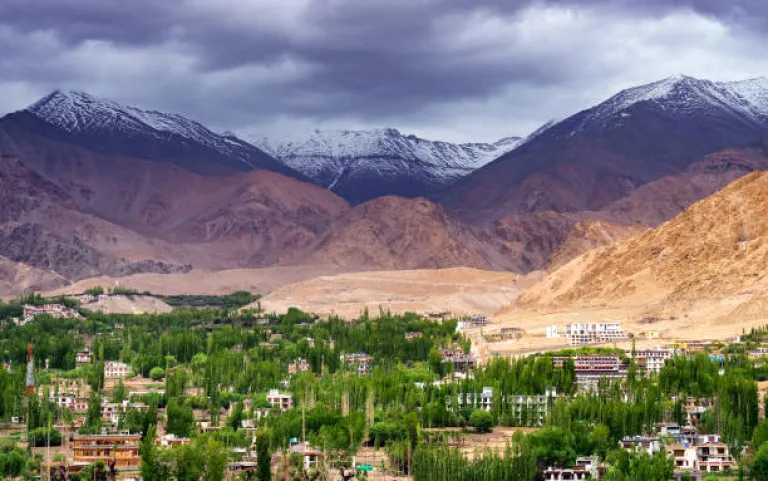 Here’s a sample 10-day itinerary to help you make the most of your Ladakh adventure:
Here’s a sample 10-day itinerary to help you make the most of your Ladakh adventure:
Day 1: Set off from Delhi, driving towards Manali or Srinagar, where you’ll spend the night.
Day 2: Continue your journey to Keylong (if taking the Manali route) or Kargil (if taking the Srinagar route) for an overnight stay.
Day 3: Arrive in Leh, the heart of Ladakh, and settle in for the night.
Day 4: Spend the day in Leh, exploring local sights like Shanti Stupa and Leh Palace, while allowing your body to acclimatize.
Day 5: Embark on a thrilling drive to Nubra Valley via Khardung La, one of the world’s highest motorable passes. Stay overnight in Nubra.
Day 6: Travel from Nubra Valley to the surreal Pangong Lake, where you’ll camp under the stars.
Day 7: Return to Leh, with stops at scenic spots along the way.
Day 8: Journey to the tranquil Tso Moriri Lake, a lesser-known gem in Ladakh.
Day 9: Head back to Leh, passing through stunning landscapes that seem straight out of a postcard.
Day 10: Bid farewell to Ladakh, flying back to Delhi or beginning your return road trip.
Also read: Conquer Ladakh by Trekking These 10 Majestic Peaks!
6. Navigating Permits: Unlocking the Mysteries of Ladakh’s Restricted Areas
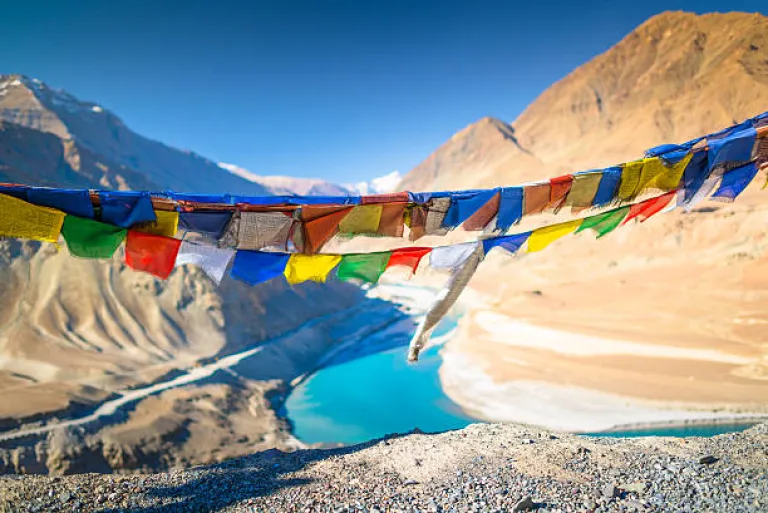 To explore some of Ladakh’s most breathtaking locations, you’ll need to secure a few permits:
To explore some of Ladakh’s most breathtaking locations, you’ll need to secure a few permits:
Inner Line Permit (ILP): Required for Indian nationals to visit protected areas like Nubra Valley, Pangong Lake, and Tso Moriri. You can obtain this permit online or in person at the Leh DC office.
Protected Area Permit (PAP): Necessary for foreign nationals to visit restricted areas in Ladakh. It’s advisable to arrange this through a registered travel agent in Leh.
7. Accommodation: Where to Rest Your Weary Head in Ladakh
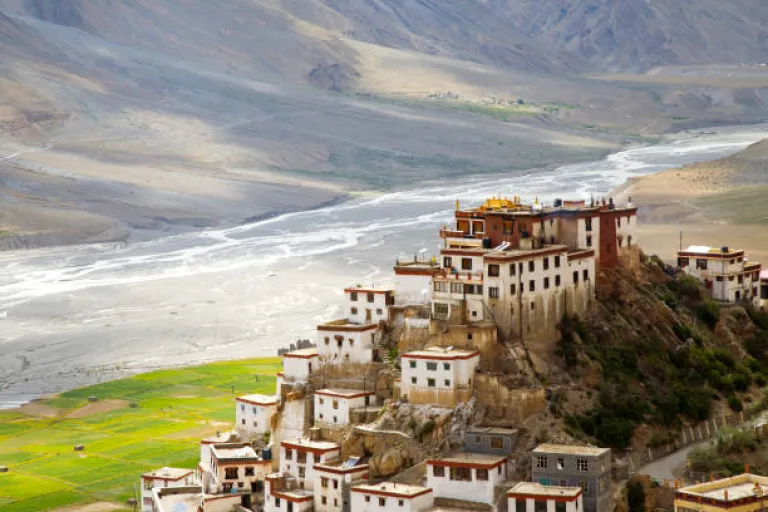 Ladakh offers a range of accommodations to suit every budget and preference. In Leh, you’ll find everything from luxurious hotels to budget guesthouses.
Ladakh offers a range of accommodations to suit every budget and preference. In Leh, you’ll find everything from luxurious hotels to budget guesthouses.
In more remote areas like Nubra Valley and Pangong Lake, homestays and campsites provide a cozy place to rest, offering a chance to experience Ladakhi hospitality firsthand.
Given the increasing popularity of Ladakh, especially in peak season, it’s wise to book your accommodation well in advance.
8. Packing Essentials: What to Bring for an Epic Ladakh Adventure
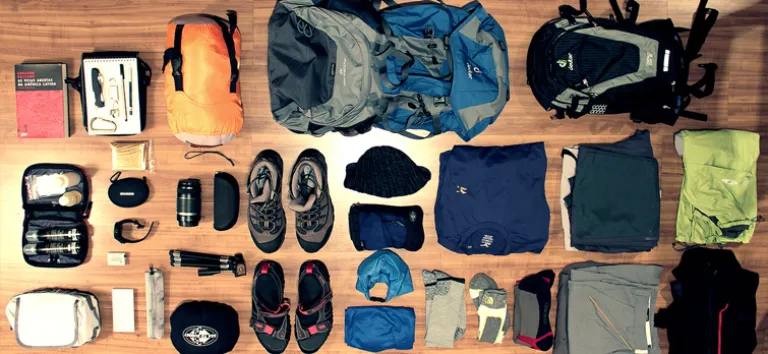 Packing for Ladakh requires careful consideration, given the region’s unpredictable weather and challenging terrain. Here’s what you should include in your packing list:
Packing for Ladakh requires careful consideration, given the region’s unpredictable weather and challenging terrain. Here’s what you should include in your packing list:
Clothing: Layered outfits, thermal wear, a windproof jacket, woolen socks, and sturdy trekking shoes are essential. Don’t forget gloves and a hat to protect against the cold.
Health Supplies: Bring altitude sickness medication, a basic first-aid kit, and any personal medications you may need.
Other Essentials: High-SPF sunscreen, lip balm, polarized sunglasses, and a power bank. A good camera with extra batteries is a must to capture Ladakh’s stunning scenery.
9. Recent Developments in Ladakh: Enhancing the Traveler’s Experience in 2024
 The year 2024 has brought several exciting developments to Ladakh, making it more accessible and tourist-friendly.
The year 2024 has brought several exciting developments to Ladakh, making it more accessible and tourist-friendly.
The Atal Tunnel, which significantly shortens the journey between Manali and Leh, continues to draw road-trippers eager to explore the newly accessible landscapes.
Moreover, Ladakh’s infrastructure, including better roads and improved tourist facilities, has made traveling here safer and more comfortable.
Efforts to promote sustainable tourism are also in full swing, with local authorities encouraging responsible travel practices to preserve Ladakh’s fragile environment.
10. Local Etiquette and Travel Tips: Blending Respect with Adventure
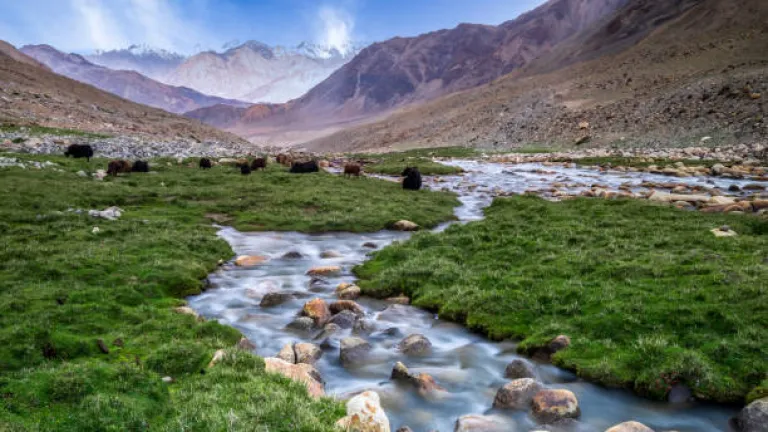 Ladakh is as much about its people and culture as it is about its landscapes. When visiting monasteries, dress modestly and maintain silence.
Ladakh is as much about its people and culture as it is about its landscapes. When visiting monasteries, dress modestly and maintain silence.
Engage with locals respectfully, and always ask for permission before photographing people. Carry your trash with you, and support local businesses by buying handcrafted souvenirs and dining at local eateries.
These small actions contribute to the sustainability of Ladakh’s tourism and ensure that this unique region remains unspoiled for future travelers.
Also read: Leh Ladakh: Complete Guide to Corporate Slave's 5-Day Escape
Embark on Your Ladakh Adventure with Confidence
Planning a trip to Ladakh from Delhi in 2024 is more than just organizing a vacation; it’s about embracing an adventure that will leave you with stories to tell for a lifetime.
Whether you’re drawn by the allure of the world’s highest passes, the serenity of its crystal-clear lakes, or the rich tapestry of its culture, Ladakh promises an experience like no other.
With the right planning, a spirit of adventure, and respect for the land and its people, your journey to Ladakh will be nothing short of extraordinary.
Published at
About Author
Prerna Dixit
Subscribe our Newsletter
Get our weekly tips and travel news!
Related Posts
10 amazing hacks for comfortable train journeys in India
Make your Indian train journey comfortable with these 10 hacks: choose the right class, pack essentials, stay hydrated, wear comfy clothing, charge devices, bring entertainment, prioritize safety, book lower berths, use travel apps, and socialize.
10 Amazing New Attractions in Singapore - Indian Travelers Guide 2025
Explore the new yet amazing attractions of Singapore
10 Hidden Destinations In Northeast India
Immerse yourself in the magic of unexplored landscapes, vibrant cultures, and breathtaking adventures. Ready to redefine your wanderlust?
10 Important Things you should know about South Korea before traveling
Explore the wonders of South Korea with 10 Important Things to Know Before Traveling. This blog unveils cultural insights, from decoding Hangul to navigating bustling streets.
10 Luxury Hotels in Bangalore That Are Too Good To Be True
From regal palaces to eco-chic retreats, join us as we uncover the city's 10 Luxury Hotels that redefine opulence!
Latest Posts
You don't Need FASTag anymore? Everything you need to know!
No more FASTag from May 1st?
10 Dreamy Experiences for Couples in Kashmir
Fancy some romantic experiences in Kashmir?
How much will a trip to Indonesia cost from India? Travel Budget Guide
Need to budget a tropical getaway from India to Indonesia?
Indian Traveler's 7 Day Itinerary for Island Hopping in Indonesia
Your perfect Indonesian island getaway guide is here!
Best 4-Day Itinerary for Kashmir, India
Ready to fall in love with Kashmir in just four days?

